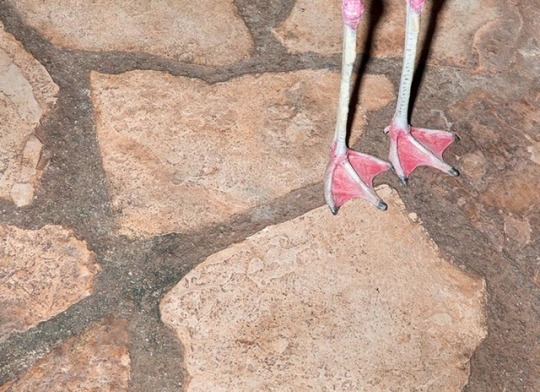#jeff minton
Text
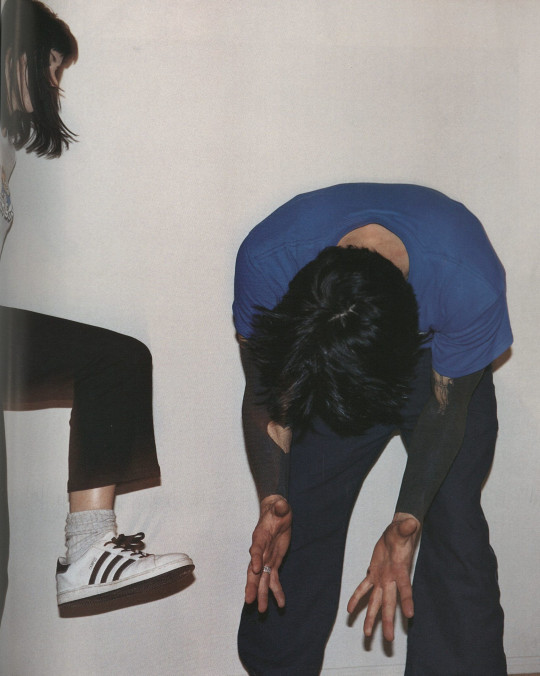
1K notes
·
View notes
Video
youtube
Tegan's Surprise Reunion! | The Collection: Season 20 Announcement Trailer | Doctor Who
Tegan Jovanka's adventures continue... but not in the way she expected! Doctor Who: The Collection returns with the Fifth Doctor's second season as the next instalment - find out more here ➡️ https://bbc.in/3pKQaIa
Subscribe to Doctor Who for more exclusive videos: http://bit.ly/SubscribeToDoctorWho
The Passenger
Written and Directed by Pete McTighe
Tegan: Janet Fielding | Nyssa: Sarah Sutton
Special Thanks to: Adventure Island, Southend-on-Sea
Melissa Aylott | Lee Binding | Phil Collinson | Emma Dodson | Jess Mendoza | Alex Moore | Jeff Parker | Jane Spencer Prior | John-Tore Eastmon | Matthew Sweet | Ellis Turffrey | Paul Vanezis | Jordan Webb
Location Manager: Andrew Stocker
Make-up: Sarah Burrows
VFX: Chris Thompson
Camera Asst/DIT: Sam Creamer
Sound Recordist: Jasmine Allodi
DOP: Jeremy Bishop/Matt Patrick
Visual Effects: Chris Thompson
Title Sequence: Sid Sutton/Charlie Lowe
Dubbing Mixer: Mark Ayres
Executive Producers: Pete McTighe/Russell Minton
#youtube#Doctor Who#The Five Doctors#Doctor Who: The Collection#Bluray#physical media#Janet Fielding#Sarah Sutton#Pete McTighe#BBC Studios#Tegan Jovanka#Nyssa of Traken#Nyssa
2 notes
·
View notes
Text
ph. jeff minton/detour magazine/skater fashion [x]
0 notes
Text
american states and their capitals + brythonic deities
Abanestah Abart Abnos Abnotarus Abnoto Adisisus Adsulugus Aermork Aersee Agrancama Agraus Agroling Agros Agrus Alaharos Alana Alenus Alest Alina Aling Alinna Alio Alios Ality Alleigh Allisul Allorrius Allugus Amarnus Amaskany Ampshiros Anapon Anemer Anessia Anew Ania Anius Ankforth Ankota Anna Annesuck Annius Annus Anorver Ansios Antridina Anus Aradsus Arania Aransamon Arck Arius Arka Arle Arnes Arolina Arrudia Arta Artrenus Arus Arusul Arvo Arvos Atens Aterrida Atina Atlaus Atle Atoboine Aton Atonus Aufagus Auge Aunus Avena Aventa Aver Averita Bantio Bara Beld Beles Belina Belis Bisma Bois Borduis Borebia Boris Borniae Bramna Brashind Braskanda Bria Brio Bris Brisbus Brizonork Bura Cadius Cadondia Callornus Camenius Campeka Campi Cana Cand Cantio Caralt Carck Card Carlem Carona Carovius Carregoma Cashindo Cashirgin Caston Ceta Chamna Chelawa Chmos Chuete Chus Cicon Cidakota Cidius Cita Citio Citts Cius Clord Clore Clorebis Clorthus Clos Clouth Cocis Cock Colifor Colinus Coliowaii Colis Colity Coln Cona Conce Cond Conobisee Contirius Contus Corka Covirg Dakenia Dakotarus Dama Damna Dampshina Dampshing Darovenia Datle Dennix Dent Denus Destre Essey Essind Esta Esternix Estre Fando Ferissee Flos Flouis Fran Frantpeld Geork Gras Grau Grolus Grumbius Hampshios Haralba Harcky Hare Harisee Hark Harkando Hart Harudius Harus Hary Hetis Hueter Huetia Huetiroln Huetts Idahode Idakota Identon Illios Ineaullul Iniando Innobius Iosey Iovis Isbus Jachus Jack Jeffe Jeridamna Jerio Jerizon Jermo June Juner Junest Junesta Junewhara Junne Junneta Junnewmer Junnos Junsio Junus Kennos Kenton Labelita Lahode Lakota Landakota Lankfork Lanos Lanta Lany Lasgus Lastepon Latia Laufagrus Laus Leigania Lemaii Lessinia Leucart Leuce Liford Linna Lisagus Littlaton Lota Luge Lugeorka Lullor Lumbiana Lumbis Luxenthus Mainnus Mapomare Mapon Mark Marka Marnem Maroln Maros Marus Masgus Maugus Meniustis Mentis Meta Micharus Micovenus Micurg Mina Minnetios Minth Minton Mios Misagus Miscoluis Missinia Moina Mois Monapona Moncarle Monco Monnus Monos Monotond Monta Mork Morka Mornem Morth Mulullo Mulus Napon Neaunnus Neaus Nebis Nebius Nectio Nernus Nest Nestindah Nestvitah Netenus Netia Netiris Netts Nevana Newjeffe Newjeri Newyor Nobius Noborvo Node Nodenus Nolisota Noluissey Noraul Nostio Ogus Ohinassee Oklahon Oklanus Oklaska Oklau Oklaus Olina Oris Pauge Paunus Peleigh Pena Pennort Phontint Piae Prissis Prota Ramullity Ranta Rhodes Rhoens Ricurida Ridakouta Robanew Rocky Rolis Rollumbia Roluge Ronus Routa Rovadroln Rumbis Sacra Saii Saintark Salle Sama Samna Sampshios Sana Saniusee Sankfork Sansis Sany Saska Sastaska Seda Sedaris Segoma Segonus Segus Smarck Smexico Sona Sonia Sonna Sprindake Sprolis Sprou Sulum Talinetts Tallos Tena Tennectia Teri Terichus Terittle Terniana Textirios Tobius Tonta Touta Tregoma Trennus Trintgoma Tris Trity Trizondis Utarsee Vericorta Verius Vernus Verrus Vhelaton Vheteri Vhetis Vhey Villinna Villinor Villo Villord Villork Villos Vina Vincolina Vinem Viregona Viri Viriand Viricuris Viris Virocky Vismapomo Vitahawas Vius Vosetio Wesoncon Wessack Wessia Wessippi Wessis Wessonos Wester Wisond Wyomennus Wyork Wyort Yomis Yord Yore Yort
0 notes
Photo

Val Kilmer
by Jeff Minton for the New York Times
17 notes
·
View notes
Photo

:)
4 notes
·
View notes
Photo
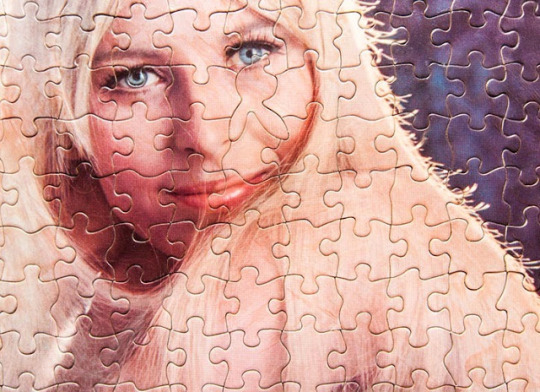


The real Playboy Mansion
(via SylK's Playground: The real Playboy Mansion)
3 notes
·
View notes
Photo

“My dad has always been supportive,” Levy explains. “I’ve been very lucky in the sense that my sexuality has never played a part in the way my parents loved me…I think coming from a family that was supportive and accepting really informed the writing and informs the storytelling. I wanted to tell the story of a family and a town that accepts everybody. That’s really been the philosophy from the start.”
-Dan Levy to LA Weekly, April 2020
https://www.laweekly.com/time-for-tea-and-talk-with-schitts-creek-creator-and-star-dan-levy/
Photo: Jeff Minton for People Magazine
#danlevyismylifecoach#dan levy#eugene levy#schitt's creek#support and acceptance#a town that accepts everybody#la weekly
27 notes
·
View notes
Text

Silver motorcycle jacket by Helmut Lang. Hat by Epoch.
274 notes
·
View notes
Text
Feb. 12, 2020: Obituaries
Bobby Shoemaker, 90

Mr. Bobby Shoemaker, age 90 of North Wilkesboro passed away Sunday, February 9, 2020 at Hugh Chatham Memorial Hospital in Elkin.
Graveside services will be held 2:00 PM Friday, February 14, 2020 at Arbor Grove Baptist Church Cemetery with Rev. Lane Roark officiating.
Mr. Shoemaker was born March 15, 1929 in Wilkes County to Robert McKinley Shoemaker and Addie Mastin Shoemaker. He was a retired carpenter, first working for Foster Sturdivant Construction Company on projects that included the Reins-Sturdivant Chapel and Arbor Grove Baptist Church. He was also a brick and block mason and helped to build the racing garages for race car owner Junior Johnson in Ingle Hollow. He also worked alongside his two brothers to build many homes in Wilkes County. He loved to hunt and raised beagle dogs for many years. His greatest joy was his family and especially his grand and great grandchildren.
He was preceded in death by his wife of 69 years, Vecie Hall Shoemaker, his parents, two sisters R.V. (Robert Virginia) Bowman and Agnes Alexander, two brothers; Bruce Shoemaker and Edward (Dink) Shoemaker and a son-in-law; Mike Cannon.
Mr. Shoemaker is survived by two daughters; Lynn Shoemaker Dyer and husband Danny of Millers Creek, Diane Shoemaker Cannon of Wilkesboro, a son; Bobby F. Shoemaker and wife Pam of North Wilkesboro, four grandchildren; Robin D. Hamby and husband Matt, Amber C. Shumate and husband Andy, Ashley D. Cannon and fiance' Bobby Sheets and Adam P. Shoemaker, six great grandchildren; Aaron and Adrienne Hamby, Emeliegh and Ashlyn Shumate, Dawson and Gage Sheets, and a sister-in-law; Ruth Shoemaker, and his special friend and caregiver; Debbie Whitley.
Flowers will be accepted or memorials may be made to Arbor Grove Baptist Church Cemetery Fund, 196 Arbor Grove Church Road, North Wilkesboro, NC 28659.
Gene Stewart 89

Mr. Gene Ray Stewart age 89 of North Wilkesboro passed away Sunday, February 9 2020 at his home.
Funeral Services will be held at 2:00 PM Wednesday February 12, 2020 at Welcome Home Baptist Church with Rev. Lyn Lambert, Rev. John Triplett, Rev. Jeff Collins, and Rev. Dean Crane officiating. The family will receive friends from 12:00 to 1:30 PM prior to the service at the church. Burial with Military Honors by Veterans of Foreign Wars Post 1142 will be held in Welcome Home Baptist Church Cemetery
Gene was born August 18, 1930 in Watauga County to Edward "Eddie" and Blanche Luther Stewart. He served in the United States Army in the Korean Conflict. He was a graduate of Clevinger Business School. He retired from Holly Farms Poultry/Tyson Foods as a manager in the accounting department. Gene was a member of Welcome Baptist Church where he served as Secretary-Treasurer for many years.
Mr. Stewart was a member of the Silver Striders through the YMCA. He loved fishing, gardening and spending time with his grandchildren. He was a devoted husband, father, and grandfather. He was a faithful church member and was known for his mild mannered spirit. Gene was a Tarheel Fan and Braves Fan, and loved watching his grandkids involvement in sports. He enjoyed watching West Wilkes Basketball.
In addition to his parents, he was preceded in death by his wife, Opal Faw Stewart, and two brothers, John Stewart, and Jimmy Stewart.
He is survived by a daughter Jeannie Stewart Stinson and husband Joel of North Wilkesboro, two sons, Stephen Ray Stewart and girlfriend Jayme Love of Statesville, and Reverend Dean Crane and wife Betty of Purlear, seven grandchildren Lucas Stinson, Jackson Stinson, Mackenzie and Christopher Stewart, Matthew Crane, Adam Crane, Josh Crane seven great grandchildren and three sister in-laws; Bonita Greene Stewart of Wilkesboro, Linda Stewart of Lenoir, and Babe Faw of Wilkesboro.
Flowers will be accepted or memorials may be made to Hope Ministry Toy Store C/O Brushy Mtn Baptist Association 514 Elkin Hwy. North Wilkesboro, NC 28659 or Nichols For Kids-Wilkes County Schools C/O April Marr 613 Cherry Street North Wilkesboro, NC 28659
The family would like to thank Pruitt Health Hospice and Home Instead for their excellent care of their dad. A very special thank you to Lucille Johnson, Katherine Comer, Pam Osborne, and Gloria Wood for helping to make our dad's last year's wonderful. We love you.
Jesse Church, 83

Jesse Carson Church, age 83, of North Wilkesboro, passed away, Saturday, February 8, 2020 at his home. Jesse was born April 11, 1936 in Wilkes County to George and Nettie Adams Church. He was of the Baptist Faith. Mr. Church was preceded in death by his parents; and brothers, Albert, Marvin, Clayton and Richard Church.
Surviving are his wife, Mary Catherine Cooper Church; several nieces and nephews.
Memorial service will be held 3:00 p.m. Sunday, February 16, 2020 at Harvest Time Fellowship Church, 2865 Elkin Highway 268, North Wilkesboro, NC 28659 with Rev. Tom Lineberger and Rev. Steve Rose officiating. The family will receive friends at Harvest Time Fellowship Church from 1:00 until 3:00 on Sunday, prior to the service. Flowers will be accepted or memorials may be made to Hospice of Wilkes or any other Hospice organization. Miller Funeral Service is in charge of the arrangements.
Clarence Carty, 86

Mr. Clarence Ray Carty, age 86 of Wilkesboro passed away Sunday, February 9, 2020 at Accordius Health at Wilkesboro.
Funeral services will be held 2:00 PM Wednesday, February 12, 2020 at Edgewood Baptist Church with Pastor Eddie Tharpe officiating. Burial will be in Edgewood Baptist Church. The family will receive friends from 1:00 until 2:00PM prior to the service at the church.
Mr. Carty was born September 24, 1933 in Washington County, VA to Maiden and Ella Mae Holbrook Carty.
In addition to his parents he was preceded in death by a granddaughter, Valerie Teague, and a grandson, Jonathan Teague, and thirteen brothers and sisters.
He is survived by two sons; Jeffrey Lynn Carty and wife, Gigi of N.Wilkesboro and Timothy Ray Carty and wife, Vicki of North Wilkesboro, nine grandchildren; Misty Davis and Alex, Mindy Teague and Drew, Tasha Summerford and Dan, Christina Harrold and James, Shonna Davis, Tabitha Carty, Rebecca Minton and Anthony, Brandi Linville and Kenneth, Samantha Carty and Michael, and sixteen great grandchildren.
In lieu of flowers memorials may be made to Ebenezers Children's Christian Home P.O. Box 2777 North Wilkesboro, NC 28659 or St. Jude's Children's Research c/o Window World Cares. 118 Shaver Street, North Wilkesboro, NC 28659.
Raydell Blackburn, 80
Raydell Billings Blackburn, age 80, of Mulberry, passed away Sunday, February 9, 2020 at Wake Forest Baptist Health-Wilkes Regional. Raydell was born March 18, 1939 in Wilkes County to John and Nellie Key Billings. Mrs. Blackburn was preceded in death by her parents; sister, Shirley Billings Miles; and nephew, Ronnie Elmore.
She is survived by her husband, Clyde Blackburn; daughter, Karen Blackburn Earp and spouse George of Hickory; son, Brent Blackburn and spouse Erica of Mulberry; brother, Danny Billings of Mulberry; grandchildren, Julia Golden and spouse Matt, Justin Earp, Claire Earp, Olivia Blackburn, Lilly Blackburn; great grandchildren, Embry and Violet.
Funeral service will be held 2:00 p.m. Saturday, February 15, 2020 at Mountlawn Memorial Park Mausoleum Chapel with Pastor David Jones officiating. Burial will follow in Mountlawn Memorial Park. Flowers will be accepted. Miller Funeral Service is in charge of the arrangements.
Yolande Caudill, 97

Mrs. Yolande Desmond Kerbaugh Caudill, age 97 of North Wilkesboro, died Saturday, February 8, 2020 at Villages of Wilkes.
A graveside service will be held 11:00 AM Wednesday, February 12 at Mountlawn Memorial Park with Dr. Bert Young officiating. The family will receive friends from 1:30 until 3:00 PM at Reins-Sturdivant Funeral Home after the service.
Mrs. Caudill was born October 27, 1922 in Greenville, TN to John Thomas and Eula Leonard Kerbaugh. She was a lifetime member of First Baptist Church of North Wilkesboro and a FBC choir member, was a member of the VFW Auxillary and the Crickett Home Demonstration Club. She was an expert seamstress, made the best yeast rolls, and was a crafter of Chrismons, displayed at FBC North Wilkesboro during the holidays.
In addition to her parents she was preceded in death by her husband, Thomas Lee Caudill, Sr.; one sister, Vivian K. Greene; and three brothers, Shoun Kerbaugh, Glyn Kerbaugh, and Lyn Kerbaugh.
She is survived by one daughter, Sharon Caudill Adams and husband, Jack, of Clemmons; two sons, Thomas L. Caudill, Jr. and wife, Vickie, and James S. Caudill and wife, Joann, all of Wilkesboro; five grandchildren, Michael B. Caudill, Brian T. Caudill, Andrea A. Turner, Geoffrey T. Adams, and Sara A. Caudill; eight great-grandchildren, Matthew B. Caudill, Brandon A. Caudill, Brennen T. Caudill, Lilly Kate Turner, Savannah C. Turner, Madison G. Adams, Colton T. Adams, and Mila A. Morales; and one sister, Doris K. Bentley and husband, Jim.
In lieu of flowers, memorials may be made to the Rainy Day Fund, c/o First Baptist Church of North Wilkesboro, P.O. Box 458, North Wilkesboro NC 28659.
Julie Minton, 50
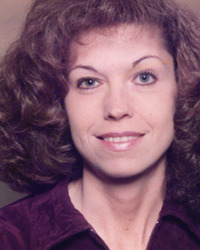
Julie Christine Minton, age 50, of North Wilkesboro, passed away Thursday, February 6, 2020 at her home. Julie was born October 13, 1969 in Wilkes County to Thomas James "Johnny" and Mary Christine Bouchelle Call. Julie attended Cricket Baptist Church and was a loving mother to her sons. She was preceded in death by an infant brother; grandfather, Clarence C.J. Call; and uncle, Joey Call.
Surviving in addition to her parents of Wilkesboro; are her sons, Jonathon Marshall Minton, Joshua Austin Minton both of Hays; brother, David James Call of North Wilkesboro; sisters, Tammy Annette Shew and spouse Bodean, Sandy Ann Yates and spouse Keith all of North Wilkesboro; grandmother, Della Call of North Wilkesboro; nephews, Austin Shew and spouse Ashley, Michael Lane Bare all of Hays; nieces, Catherine Yates and Hope Yates both of North Wilkesboro; great nephew, Bentley Shew; aunts, Patricia, Joann, Janie, Gail, and Jeanette; and uncles, Jimmy and Jeff.
Funeral service was February 10, at Fishing Creek Arbor Baptist Church with Rev. David Wellborn and Rev. Ronnie Millsaps officiating. Burial followed in the Church Cemetery. Miller Funeral Service is in charge of the arrangements.
Teodulo DeLeon, 80
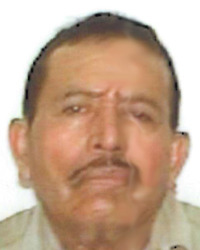
Mr. Teodulo Meza DeLeon, age 80 of North Wilkesboro passed away Thursday February 6, 2020 at Kate B. Reynolds Hospice House in Winston Salem.
Funeral Services were February 9, at Reins Sturdivant Funeral Home Chapel with Father John Hanic officiating. Burial was at Scenic Memorial Gardens in Wilkesboro.
Mr. DeLeon was born February 17, 1939 in San Luis Potosi, Mexico to Gunercindo Meza and Severiana Meza DeLeon. He retired from Tyson Foods.
In addition to his parents, he was preceded in death by three sisters, Felipa Meza, Antonia Meza and Cecilia Meza.
Mr. DeLeon is survived by his wife, Antolina DeLeon DeMeza of the home, four sons, Agustin, Natalio, Emeterio and Crispin Meza, six daughters, Ubalda, Catalina, Maria, Bertha, Carmen and Guadalupe Meza, twenty-seven grand-children, ten great grand-children, four sisters, Marciana, Marcela, Atanacia and Agapita Meza, two brothers, Crispin and Leopoldo Meza.
Flowers will be accepted.
Darcie Call, 88
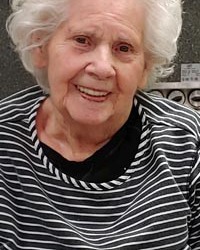
Mrs. Darcie Lee Minton Call, 88, of Wilkesboro, passed away on Wednesday, February 5, 2020 at Wilkes Medical Center.
Darcie was born on May 14, 1931 in Wilkes County to Ransom Edgar Minton and Connie Lee Parker Minton.
Darcie is survived by her daughters, Brenda Call Hooks (Len) of Chesnee SC, Phyllis Call Johnson (Bryce), Thricia Call Walter (Steve), Wanda Call Smith (Rick), all of Wilkesboro; sons, Ransom Call (Shirley) of Wilkesboro, Nelson Call (Laurie) of North Wilkesboro; twelve grandchildren and fifteen great grandchildren.
Funeral was February 9, at Fishing Creek Arbor Baptist Church. Burial was in the church cemetery with Rev. David Welborn officiating.
In addition to flowers, memorial donations may be given to Fishing and Creek Arbor Baptist Church Building Fund, 2446 Fishing Creek Arbor Rd, Wilkesboro, NC 28697.
Adams Funeral Home of Wilkes has the honor of serving the Call Family.
Randy Osborne, 34
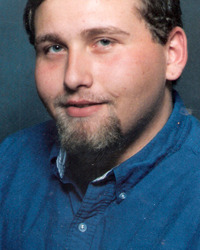
Mr. Randy Paul Osborne, 34, of North Wilkesboro, passed away on Wednesday, February 5, 2020.
Randy was born on June 25, 1985 in Wilkes County to Brian Tracy Osborne and Cathy Marie Fitzwater Osborne.
Randy is preceded in death by his grandparents, Lonnie and Rose Osborne, Samuel and Cordelia Fitzwater; aunts, Mary Moran, Donna Fitzwater and cousin, Jason Fitzwater.
Randy is survived by his parents Brian and Cathy Osborne.
A private service will be held at a later date.
In lieu of flowers memorial donations may be given to The American Liver Foundation, 16 Hampton Village Plaza # 215, St. Louis, MO 63109
Adams Funeral Home of Wilkes has the honor of serving the Osborne Family.
Mamie Osborne, 91

Mamie "Nell" Osborne, formerly of N. Wilkesboro, is heaven bound after spending 91 years on earth as a loving daughter, sister, mother of five and grandma to many.
Nell was born in Wilkes County on June 30th, 1933, to Marion Frank Church and Daisy Agnus Milam Church during the Great Depression.
The red head was also known for her wit and spunk. Never did one have to guess what Nell was thinking. She was funny, but also exceptionally bright. She was an avid reader and writer. She documented many of her life stories and travels through her books and poems. She always had a word search, a good book and her Bible close at hand.
Her humor, kindness and selfishness will be remembered by all who came in contact with her during her 91 remarkable years.
A celebration of Nell's life will be held Friday, February 7th at Miller Funeral Service from 1-2 p.m. Family and friends are encouraged to come gather in her memory.
Special thanks to the team at Chatham Nursing and Rehabilitation. Memorial contributions may be made, in honor of Nell, to Samaritan's Purse - a local charity that she supported during her life.
Peggy Taylor, 74

Peggy Ann Prevette Taylor, age 74, of McGrady, passed away, Tuesday, February 4, 2020 at her home. She was born June 7, 1945 in Wilkes County to Dewey Gaither and Hazel Johnson Prevette. Peggy was a graduate of Wilkes Central High School, was a Teacher's Assistant; and a school bus driver for Mulberry Elementary School. Mrs. Taylor was preceded in death by her parents; and a daughter, Pamela Taylor West.
Surviving are her husband, Wallace Taylor; daughter, Mandy Wyatt and spouse Ricky of McGrady; grandchildren, Eric Brown and spouse Chelsea of Purlear, Evan Handy and spouse Victoria of Wilkesboro, Lauren Mitchell and spouse Ethan of North Wilkesboro; brothers, "Junior" Dewey Prevette and spouse Linda of Wilkesboro, Kenneth Prevette and spouse Sarah of Lewisville; sister, Kathy Williams and spouse Dean of North Wilkesboro; several nieces and nephews.
Funeral service was February 7, at Miller Funeral Chapel with Rev. David Key officiating. Burial followed in Taylor Cemetery in McGrady. The family has requested no food. Memorials may be made to Mtn. Valley Hospice, 688 North Bridge Street, Elkin, NC 28621. Flowers will be accepted. Miller Funeral Service is in charge of the arrangements.
Pallbearers were Eric Brown, Evan Handy, Ricky Wyatt, Ethan Mitchell, Danny Gambill and Johnathan Billings.
Lawrence Pruitt, 86

Lawrence Allen Pruitt, age 86, of Traphill, passed away Tuesday, February 4, 2020 at Wake Forest Baptist Health-Wilkes Regional. Mr. Pruitt was born May 7, 1933 in Wilkes County, he was a son of the late Archie and Jettie Shaver Pruitt. Lawrence served in the Army and fought in the Korean War.
In addition to his parents, he was preceded in death by his sons, Michael Allen Pruitt and Thomas Wayne Pruitt; and sister, Loreen Cockerham.
Lawrence is survived by his wife of 63 years, Wanda June Pruitt of the home; son, David Mitchell Pruitt and lifemate Ann Sossaman of Traphill; daughter, Zendoline Kay Adams and husband Roger Adams of Traphill; brothers, Jarvie John Pruitt and wife Alice Pruitt, Gene Pruitt and wife Renee Pruitt all of Traphill; sister, Abby Pruitt Combs and husband Edsel Combs of Roaring River; grandchildren, Tara, Chad, Lance, Ayla and Leia; great grandchildren, Oaklen and Lily.
Memorial service with military honors by Veterans of Foreign Wars Honor Guard Post 1142 was February 8, at Miller Funeral Chapel with Pastor Keith Wood officiating.
In lieu of flowers, memorials may be made to Oak Level Baptist Church Cemetery Fund, 2587 Austin Little Mountain Road, Roaring River, NC 28669. The family has requested no food. Miller Funeral Service is in charge of the arrangements.
Jera Wagoner, 40
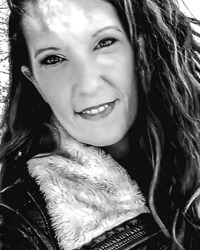
Jera Lee Parsons Wagoner, age 40 of North Wilkesboro passed away Monday, February 3, 2020.
Private services will be held at a later date.
Jera was born May 27, 1979 in Wilkes County.
She is survived by her father; Jerry Parsons of North Wilkesboro, her mother;
Rita Looney Hatmaker of Elkin, her husband; Ritchie Wagoner of North
Wilkesboro and one sister; Kristina Parsons of Hays.
In lieu of flowers memorials may be made to St. Jude Children's Hospital, c/oWindow World Cares, 118 Shaver Street, North Wilkesboro, NC 28659.
David Dearman, 82
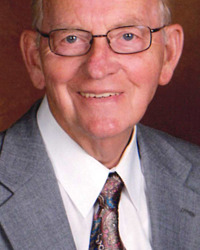
Mr. David Dewitt Dearman, age 82 of North Wilkesboro passed away peacefully at his home on Monday, February 3, 2020.
Funeral services were February 8, at Baptist Home Baptist Church with Rev. David Jones and Rev. Mark O. Hollar officiating. Entombment was in Mountlawn Memorial Park Mausoleum.
Mr. Dearman was born April 28, 1937 in Wilkes County to Dewitt Talmadge and Rena Miller Dearman.
David married his high school sweetheart, Carolyn on December 18, 1955.
He was preceded in death by his parents.
David is survived by his wife of 64 years; Carolyn Johnson Dearman of the home, three daughters; Kimberly Dearman-Wilcox and husband Shaun of Oak Island, NC, Tamera Dearman Newton and husband Steve of North Wilkesboro and Kandice Dearman-West and husband Chris of Matthews, three grandchildren that he adored; Cameron David Newton, Joseph Stephen Newton and Kassidy Caroline Newton, special niece; Teresa Dancy Casey and his special dog; Duncan.
Flowers will be accepted or memorials may be made to Baptist Home Baptist Church, 2367 Sparta Road, North Wilkesboro, NC 28659, Alzheimer's Association, 4600 Park Road, Suite 250, Charlotte, NC 28209 or Mountain Valley Hospice and Palliative Care, 401 Technology Lane, Suite 200, Mt. Airy, NC 27030.
Wanda Montgomery, 87
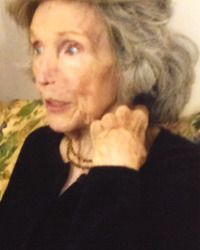
Wanda Kay Harms Montgomery, age 87, of Mt. Airy, formerly of West Jefferson, passed away Monday, February 3, 2020 at Twelve Oaks Nursing Center.
She was born July 18, 1932 in Wilkes County to Harrison Columbus and Minnie Leola Brown Miller. Her DNA says she was a mixed of English, Wales, Germanic, European, Ireland, Scotland, and small percent of Native American.
Mrs. Montgomery was a great great great grand-niece of Daniel Boone. She moved to Savannah, Georgia in her early years and married William Harms Sr., then in 1972, she married Walter A. Montgomery, who was in the military and they traveled with their family all over the world and come to retire in Ashe County.
Mrs. Montgomery was preceded in death by her parents; a son, Keith M. Miller; and siblings, Thelma, Herman, Blanche, Beulah, Dorothy, Clyde. She will be missed by all.
Surviving are her husband, Walter A. Montgomery; her children, William S. Harms, Jr. and spouse Linda of Ellabell, Georgia, Lilly A. Harms of Vidalia, Georgia, Todd Stewart of Gainesville, Georgia; one grandson; and one great granddaughter
Funeral service was February 7, at Union Baptist Church with Rev. Julius Blevins officiating. Burial followed in the Church Cemetery. . Memorials may be made to Hospice of Ashe County, 392 NC Highway 16S, Jefferson, NC 28640. Miller Funeral Service is in charge of the arrangements.
Frances Greene, 87

Mrs. Frances Curlee Greene, age 87 of Wilkesboro passed away Monday, February 3, 2020 at Wilkes Senior Village.
Private family Graveside serviceswere February 7, at Barnes Family Cemetery in Churchland with Rev. Mike Hamby officiating.
Mrs. Greene was born September 16, 1932 in Union County to Abraham M. and Lois Witmore Curlee. She was a member of the First United Methodist Church of North Wilkesboro. Mrs. Greene graduated from Catawba College in 1953. She was a devoted wife, mother, grandmother and homemaker and loved art and music.
In addition to her parents, she was preceded in death by her husband; Edward Franklin Greene, a son; Richard Edward Greene and a daughter; Katherine Ann Greene.
She is survived by one son; Stephen Brian Greene and wife; Vanya of Wilkesboro, four grandchildren; Matthew Greene of Sarasota, FL, Trevor Greene of North Wilkesboro, Trenton Greene and Lindsay Greene both of Wilkesboro and one great grandchild; Lillian Katherine Greene.
In lieu of flowers memorials may be made to the Donor's Choice.
Ronald Hamby, 62

Ronald "Ronnie" Darrell Hamby, age 62, of Deep Gap, passed away Saturday, February 1, 2020 at Wake Forest Baptist Medical Center in Winston Salem. He was born August 24, 1957 in Wilkes County to Sherman Garfield and Gladys Hicks Hamby.
He was preceded in death by his parents; infant son, Ryan Hamby; and brother, Donald Hamby.
Surviving are his wife, Claudine Billings Hamby; daughters, Felicia Griffin and spouse Rodney of Wilkesboro, Jessica Brown and spouse Robbie of Millers Creek, Melissa Kay Lewis of Caldwell County; sons, Brad Samuel Hamby of Caldwell County, Ronnie Andrew Hamby of Florida; brothers, Calvin Hamby and spouse Loretta of Purlear, Robert Hamby and spouse Norma of Burke County, Greg Hamby of Greensboro; sisters, Sharon Duncan and spouse Jake of Sawmills, Carolyn Hamby of Crumpler, Nancy Walters and spouse Donnie of North Wilkesboro; eight grandchildren; several nieces and nephews.
Graveside service was February 6, at Mtn. View Cemetery in Deep Gap. Flowers will be accepted. Miller Funeral Service is in charge of the arrangements.
Ronald Canter 71

Mr. Ronald Gray "Ron" Canter age 71 of Wilkesboro passed from this life to his eternal home February 1, 2020 surrounded in peace and love by his family.
Ron was born November 2, 1948 to Hubert Alton and Gozeal McNeil Canter. He served in the United States Air Force during the Vietnam Conflict. Ron obtained a Bachelor of Science Degree in Psychology from Appalachian State University.
In addition to his parents, he was preceded in death by his brother James Alton Canter.
Ron is survived by his wife of 50 years, Nancy Church Canter, of the home; two daughters - April Canter Greenwood and husband Charlie, and Alison Canter Moore and husband Chris; four grandchildren: Hollie Gray Moore, Mitchell Joseph Moore, Charles McNeil "Mac" Greenwood, John Edwin "Win" Greenwood all of Winston-Salem; One brother Kenneth Canter and wife Carol of Wilkesboro; One sister Patty Broyhill of Taylorsville; Nieces and Nephews Jeff Canter, Richard Canter, Susan Canter Boyles, Steve Canter, Gary Broyhill, Janet Broyhill Sherrill, Sandra Broyhill Hawkins, and many special great-nieces and great-nephews.
A private memorial prayer service will be held with wife, children and grandchildren.
In lieu of a funeral, a "Celebration of Life" was held. In lieu of flowers, the family requests that donations be made to any of the following: First Baptist Church of North Wilkesboro (firstbaptistNW.org), Mountain Valley Hospice and Palliative Care- 688 Bridge Street Elkin, NC 28621 (mtnvalleyhospice.org), or any charity of your choice.
2 notes
·
View notes
Text
Top 10 Creepypastas (as reccommended to you by Fallin)
So, guess I should preface, I’m actually a pretty big creepypasta fan. Or I was, back before adulthood and writing and I had more time to nap. I actually listened to narrations off YouTube more often than I ever read. It was very relaxing, like a murderous bed time story.
(And yeah, I tried writing my own a few times, that’s a different story that I’ll get into...idk, do y’all really wanna hear about my failed attempts at horror?)
Back to the point, I’m bored and decided to compile off the top of my head my Top 10 Creepypastas and share them with you. I figured, hey, if I can remember them after all this time, they’re worth mentioning.
10. I Found a Diary. The transcripts of a diary found while out hiking in New Hampshire (North Eastern US). Detailing abnormal animals, strange lights in the sky, bloody unanswered questions, and a rather unsavory turn in this poor couples’ romantic weekend. Short and sweet (especially compared with some of the other pastas on this list), a good introduction to anyone new to the genre.
9. The Russian Sleep Experiment. Here’s a classic, the supposed scientific experiment conducted by the Soviet Union in the 40s to test the effects of a new drug eliminating the need for sleep. Performed on Nazis, with devastating effects. What they did to those men...insanity, impossibility, the darkness within human nature that exists in us all, or something like that. I didn’t re-read/listen to any of these. An unofficial sequel was written and read (by the author even!), if you liked the first one and are open to what amounts to a continuation fanfic.
8. The Pastel Man. Ok, we’re getting into long story territory. 40 minutes long. And one of my all time favorite creepypasta monsters. What would you do to save someone you love? If you had the opportunity to save the most important person in your life, at the cost of one of your least favorites, would you take it? Would you take it if a seven foot tall wrinkly blue thing with pink eyes holding a messenger bag suddenly appeared in your house and offered it? If nothing else, it’s worth your consideration, no?
7. “Skinwalker” by Max Minton. Ok, so I found this on a compilation video of “3 Terrifying Skinwalker Horror Stories”. It’s the second one, go ahead and skip the first ten minutes if you’re only interested in my favorite of the three. It’s the longest of them, about 20 minutes of the overall video, so you know what you’re getting into. It’s presented as a story as told to a son by his father of how his grandfather died. The father, as a boy naturally, was taken into the woods with his father at night to hunt. Don’t you just love where this is going? Though the creature described is more akin to the creepypasta creature “The Rake” than the legitimate native american Skinwalker, I still love listening to the terror described.
6. ”Jeff the Killer” by BanningK. AKA Jeff 2016. I’m sure we’re all at least vaguely familiar with Jeff the Killer. One of the original creepypasta characters and one of the most easily recognizable.Cliche “went crazy, carved a smile into his face, is deathly pale with long black hair, yadda yadda yadda everything you think is edgy and hardcore at 13.” The original Jeff the Killer story went; kid moves to new town, gets accosted by bullies immediately, discovers a lust for blood, is disfigured, scars himself further, goes on a killing spree. This though? This adds such depth and humanity to all of these characters. Instead of the parents being simply neglectful and incompetant, they’re intolerable shitheads who care more about appearences and social standing then their childrens wellfare. It makes the bully the son of the dads new boss (or maybe he was before as well, it’s been a while), it takes out the stupid “Oh the brother was blamed and was sent to juvie with no other evidence than the other kids say so”. And it changes how Jeff was disfigured, which is really the best. No more “dunked in bleach and set on fire” or “carved a smile and cut off his eyelids to forever stare at his beautiful new face”. It’s about an hour long though, so prepare yourselves.
5. "I'm a Search and Rescue Officer for the US Forest Service". Here’s something different, rather than one pasta, it’s a series. The serilization of one man’s strange and unusual job as a, well, Search and Rescue Officer at an unspecified National Park in the U.S. At times serious, at times random and nonsensical, always leaving me wondering what would it take for this guy to just quit. All the people who work here, honestly. You’re finding random ass body parts in impossible to reach places? You found a goddamn WHALE in a landlocked national park? There are stairs in the woods? Nope. NOPE. The pay cannot be that good. So you see, these are an entertaining bunch of pastas.
4. The Origin of Laughing Jack. Another of my favorite creepypasta characters, and another video over 40 minutes long. What do you get when one lonely British boy gets the ideal best friend forever as a Christmas Gift from a genuine angel? Someone who will change and grow as he does, to ensure that no matter what it is his absolute perfect companion? Something that will always agree with him, and enjoy everything he does? Well, if that kid grows up to be a serial killer, you got yourself one creepy clown monster with the passion to spread the game of brutal murder to all the lonely children of the world. Seriously, I fucking love this character and it’s mostly due to this origin story.
3. “Tales from the Gas Station”. Another series of pastas, revolving around a shitty gas station on the edge of town, the weird cultists in the nearby woods, the demon living in the catacombs below, the violent mercenary Spencer, and all of it reads like a straight man in a stand up routine. Honestly, it reads like something @amarynthian-fortress writes. Just that same brand of straight up absudrity that everyone just goes along with cuz, well, what else are they gonna do? So what if Donald Glover might be a shapeshifting demon? Just gotta kill Donald Glover. Why not? Or how about the time Death himself came for our humble and sleepless protangonist, only to turn out to be a crazed fan trying to abduct him in his creeper van. Yes, that actually happened. Yes, you do need to start on this. There’s a book. There’s merchandise. Now that I have money I should really buy some...
(Oh, and as a side note, there’s a creepypasta series that takes place in the “Gas Station” universe called Finding Vanessa. The tale of a no-nonsense private eye having to make his way through the madness of the town in search of his niece. You don’t have to strictly listen to all the gas station stuff to understand, but it will give more context.)
2. Stolen Tongues. A more accurate tale of an encounter with native american folklore. AKA “Cabin Getaway” and “MY Fiance is Behaving Strangely Again”. Man and his fiance go up to her parents remote Colorado cabin. They find things from her past have not been laid to rest. As a matter of fact they’re very much active, and out for her soul. Honestly cannot reccommend enough for those who are lovers of thrills and drama. Beautiful pacing, scares and chills, and just a wonderful plot that can be enjoyed as a horror story or just a story of facing your demons. Or, your future wives demons. Hey, for better or worse am I right?
(Honorable mention, Candle Cove. No specific pasta from/having to do with Candle Cove, I just like the mythos and lore. And The Skin Taker. I fucking love The Skin Taker.)
1. I Sold My Soul for a Used Dishwasher and I Would Like it Back. Just...just reread the title. I think the tone and phrasing alone perfectly describes why it’s my absolute favorite. You may have noticed a bit of a pattern throughout the list. I like dark and creepy, but I also like ridiculous and insane. This falls into the insane category. Long story short; Dude is haggling prices of a used dishwasher online, jokes about giving his soul for it. Seller actually takes him up on it. Turns out selling your soul has a few side effects, who knew? Protag and his new ghost roommate embark on a journey to track down the guy who took his soul and get it back. The dishwasher leaks anyway.
14 notes
·
View notes
Text
Make A Wild Dunes Stop On Road To Masters
The 2019 Masters Tournament will draw golf fans from near and far for four days of competitive play April 11-14. Wild Dunes Resort, a Destination Hotel near Charleston, South Carolina, is offering families and friends looking to road trip to and from this celebrated event, the chance to experience relaxation, sunshine and award-winning golf with its new Road to the Masters Package.
Available for stays April 1-21, with rates starting at $404 per person, per night, this package includes:
Accommodations in the resort’s AAA Four-Diamond Rated Boardwalk Inn, the Village at Wild Dunes or in the resort’s luxury condos
One round of golf, with cart fees included, on the Links Course
One round of golf, with cart fees included, on the Harbor Course
Bucket of balls & full range access
Daily breakfast at Huey’s Southern Eats
“We can’t wait to welcome players of all skill levels to experience our Tom Fazio-designed Links and Harbor Courses for the ultimate Masters golf vacation this year,” shares Wild Dunes Resort’s Golf Director Jeff Minton. “Whether coming from the north or south, our resort is an unbeatable pit-stop for families and friends headed to the most prestigious golf tournament of the year.”
Others wishing to enjoy Wild Dunes Resort’s premier courses year-round can take advantage of the resort’s Young Executive Membership and Harbor Friends Golf Program.
Young Executive Membership offers those 40 and under the opportunity to take advantage of the resort’s award-winning golf courses, pools, beach and more at an incredible value, with inclusions such as Links and Harbor Course greens fees, preferred golf member guest rates, preferred daily tee times, waived tennis court fees, discounted tennis lessons/clinics, access to all resort pools and the grand pavilion, 25 percent off best available rate room reservations and Destination Properties, 10-20 percent off rentals, retail purchases and food and beverage outlets, and more.
The resort’s new Harbor Friends Golf Program is the ultimate annual VIP pass to the Harbor Course, known for its challenging design and beautiful views. Local golfers (Dorchester, Charleston or Berkeley counties) can enroll for $49 to enjoy year-round perks including $44 rounds on the Harbor Course, exclusive monthly offers and tournament access, a Friends Reward punch card to earn free rounds and merchandise, 10 percent off restaurant and pro shop purchases, and a Harbor Friends tumbler after sign-up.
www.wilddunes.com
The post Make A Wild Dunes Stop On Road To Masters appeared first on Golf Tips Magazine.
from Golf Tips Magazine https://ift.tt/2ukYVbw
4 notes
·
View notes
Photo

Brains of several dozen species of mammals and birds stored individually in antifreeze. Image Credit: Jeff Minton for The New York Times.
To Unlock the Brain’s Mysteries, Purée It
A Vanderbilt neuroscientist has discovered an unusual but shockingly fruitful way to study our most enigmatic organ.
Article by: Ferris Jabr (The New York Times)
One day in June 2012, at São Paulo’s international airport, Suzana Herculano-Houzel hauled two heavy suitcases onto an X-ray-machine conveyor belt. As the luggage passed through the scanner, the customs agent’s eyes widened. The suitcases did not contain clothes, toiletries or any of the usual accouterments of travel. Instead, they were stuffed with more than two dozen curiously wrapped bundles, each enclosing an amorphous blob suspended in liquid. The agent asked Herculano-Houzel to open her bags, suspecting that she was trying to smuggle fresh cheese into the country; two people had been caught doing exactly that just moments before.
“It’s not cheese,” Herculano-Houzel said. “It’s only brains.”
She was a neuroscientist, she explained, and she had just returned from an unusual — but completely legal — research expedition in South Africa, where she collected brains from a variety of species: giraffes, lions, antelopes, mongooses, hyenas, wildebeests and desert rats. She was taking the organs, sealed in containers of antifreeze, back to her lab in Rio de Janeiro. The customs agents reviewed her extensive collection of permits and documentation, and they eventually let her pass with suitcases in tow.
In the last 12 years, Herculano-Houzel, now a researcher and professor at Vanderbilt University in Nashville, has acquired the brains of more than 130 species. She has brains from commonplace creatures — mice, squirrels, pigeons — and more exotic ones, like Goodfellow’s tree kangaroo and the Tasmanian devil. She has brains from bees and an African elephant. She prefers to obtain whole brains if possible, and she goes to great lengths to protect the organs during transport.
A brain is a precious thing, containing many of science’s greatest unsolved mysteries. What we don’t know about the brain still eclipses what we do. We don’t know how the brain generates consciousness. We aren’t sure why we sleep and dream. The precise causes of many common mental illnesses and neurological disorders elude us. What is the physical form of a memory? We have only inklings. We still haven’t cracked the neural code: that is, how networks of neurons use electrical and chemical signals to store and transmit information. Until very recently — until Herculano-Houzel published an important discovery in 2009 — we did not even know how many cells the human brain contained. We only thought we did.
Before Herculano-Houzel’s breakthrough, there was a dominant narrative about the human brain, repeated by scientists, textbooks and journalists. It went like this: Big brains are better than small brains because they have more neurons, and what is even more important than size is the brain-to-body ratio. The most intelligent animals have exceptionally large brains for their body size. Humans have a brain seven times bigger than you would expect given our overall size — an unrivaled ratio. So, the narrative goes, something must have happened in the course of human evolution to set the human brain apart, to swell its proportions far beyond what is typical for other animals, even for our clever great-ape and primate cousins. As a result, we became the bobbleheads of the animal kingdom, with craniums spacious enough to accommodate trillions of brain cells: 100 billion electrically active neurons and 10 to 50 times as many supporting cells, known as glia.
By comparing brain anatomy across a large number of species, Herculano-Houzel has revealed that this narrative is seriously flawed. Not only has she upended numerous assumptions and myths about the brain and rewritten some of the most fundamental rules about how brains are constructed — she has also proposed one of the most cohesive and evidence-based frameworks for human brain evolution to date.
But her primary methods are quite different from others’ in her field. She doesn’t subject living brains to arrays of electrodes and scanners. She doesn’t divide brains into prosciutto-thin slices and carefully sandwich them between glass slides. She doesn’t seal brains in jars of formaldehyde for long-term storage. Instead, she demolishes them. Each organ she took such great care to protect on her trans-Atlantic journey was destined to be liquefied into a cloudy concoction she affectionately calls “brain soup” — the key to her groundbreaking technique for understanding what is arguably the most complex congregation of matter in the universe. In dismantling the brain, she has remade it.
The history of studying the brain is a history of learning how to perceive it, literally and figuratively. Just as technological advances have allowed us to better examine the moon, stars and planets, they have significantly improved our ability to chart and inspect the thick constellations of cells in our own heads. The prevailing metaphor for the brain has long been a piece of biological machinery, but our conception of that machine has evolved in parallel with our technological prowess. At first, the brain was viewed as the body’s coolant system, a hydraulic pump for “animal fluids.” Then it was a collection of self-winding springs or an “enchanted loom,” then a clock, an electromagnet, a telephone switchboard, a hologram and, most recently, a biological supercomputer.
Despite all the advances we’ve made, there are still many fundamental aspects of the brain that we do not understand at all. This is mainly because the brain is a many-layered mystery, demanding intense scrutiny at vastly different scales, from the molecular to the perceptual. But it’s also because neuroscience has sometimes neglected, rushed or botched what should be its most elementary tasks, chasing holy grails before establishing primary principles. Case in point: We are well into the 21st century, and we are only now getting an accurate census of the brain’s cellular building blocks.
In part because the scientific portrait of the brain remains so patchy, it has long been embellished with numerous myths and misconceptions. For example, there’s no truth to the idea that the brain is half android and half artist, with a left hemisphere dedicated to logic and analytical thinking and a right hemisphere for intuition and creativity. You don’t have a primitive reptilian brain tucked inside your more sophisticated mammalian tissues. You can’t increase brainpower by eating nuts, blueberries, fish and other so-called brain foods. Entire books have been written to counter such falsehoods.
Misinformation about the brain is not isolated to the general public; it is surprisingly prevalent in academia too. By the time Herculano-Houzel was old enough to pursue graduate studies in science, she had long been inoculated with a strong dose of skepticism. When she was growing up in Brazil, her parents emphasized that “it was a good thing to not take somebody’s word, no matter how respected they were,” she recalls, “and rather ask: ‘Why? How do you know that?’ ” It was not until she earned a Ph.D. in neuroscience in Europe and returned to Rio de Janeiro in 1999, however, that she confronted neuromythology head on.
Instead of pursuing postdoctoral studies — which she thought would be too intellectually restricting — she persuaded the city’s recently opened Museum of Life to offer her a job giving presentations on the brain to the public. One of her first projects was a survey regarding general beliefs about the brain: E.g., did consciousness depend on the brain? Did drugs physically alter the brain? She was shocked to learn that 60 percent of college-educated people in Rio de Janeiro believed that humans used only 10 percent of their brains — a longstanding fallacy. In truth, the brain is highly active across its entirety just about all the time, even when we are spacing out or sleeping. She couldn’t let it go. Where did such a prevalent falsehood come from? How did it spread?
She started looking for clues in research papers and popular science writing. In the foreword to the first edition of Dale Carnegie’s “How to Win Friends and Influence People,” the American psychologist William James is misquoted as declaring that “the average man develops only 10 percent of his latent mental ability.” In the ’30s and ’40s, another pioneering psychologist, Karl Lashley, discovered that he could scoop out large portions of a rat’s brain without seriously impairing its ability to solve a maze. Herculano-Houzel also recalled that early editions of the textbook “Principles of Neural Science,” along with countless studies, claimed that the human brain contained at least 10 times as many glial cells as neurons. Glia are now known to be every bit as important as neurons, facilitating electrical and chemical communication, clearing cellular detritus, protecting and healing injured brain cells and guiding the development of new neural circuits. But until the mid- to late 20th century, scientists mostly regarded glia as passive scaffolding for neurons. Perhaps the widely cited fact that glia outnumbered neurons by at least 10 to one helped cement the notion that only 10 percent of the brain really mattered. But where were the studies establishing the oft-repeated glia-to-neuron ratio?
After an exhaustive search, Herculano-Houzel concluded that there was no scientific basis for the claim. She and her collaborator Christopher von Bartheld, a professor at the University of Nevada School of Medicine, published a paper last year summing up their detective work. In the 1950s and ’60s, a few scientists proposed that glia were about 10 times as common as neurons, based on studies of small brain regions, ones that happened to have particularly high glia-to-neuron ratios. In a decades-long game of telephone, other researchers repeated these estimates, extrapolating them to the entire brain. Science journalists parroted the numbers. Soon this misconception spread to textbooks and educational websites run by the government and respected scientific organizations. Even the latest edition of “Principles of Neural Science” states that the brain as a whole contains “two to 10 times more glia than neurons.” The truth is that not a single study has ever demonstrated this. “I realized we didn’t know the first thing about what the human brain is made of, much less what other brains were made of, and how we compared,” Herculano-Houzel says.
So she decided to find out herself. For decades, the standard method for counting brain cells was stereology: slicing up the brain, tallying cells in thin sheets of tissue splayed on microscope slides and multiplying those numbers by the volume of the relevant region to get an estimate. Stereology is a laborious technique that works well for small, relatively uniform areas of the brain. But many species have brains that are simply too big, convoluted and multitudinous to yield to stereology. Using stereology to take a census of the human brain would require a daunting amount of time, resources and unerring precision.
In a study from the 1970s, Herculano-Houzel discovered a curious proposal for an alternative to stereology: Why not measure the total amount of DNA in a brain and divide by the average amount of DNA per cell? The problem with this method is that neurons are genetically diverse, the genome is a highly dynamic structure — continuously unraveling and reknitting itself to amplify or silence certain genes — and even small errors in measuring quantities of DNA could throw off the whole calculation. But it gave Herculano-Houzel a better idea: “Dissolve the brain, yes! But don’t count DNA. Count nuclei!” — the protein-rich envelopes that enclose every cell’s genome. Each cell has exactly one nucleus. “A nucleus is a nucleus, and you can see it,” she says. “There is no ambiguity there.”
By 2002, Herculano-Houzel had moved from the Museum of Life to a new science-communications job at the Federal University of Rio de Janeiro, where she also had access to lab space and the freedom to pursue research of her choice. She began experimenting with rat brains, freezing them in liquid nitrogen, then puréeing them with an immersion blender; her initial attempts sent chunks of crystallized neural tissue flying all around the lab. Next she tried pickling rodent brains in formaldehyde, which forms chemical bridges between proteins, strengthening the membranes of the nuclei. After cutting the toughened brains into little pieces, she mashed them up with an industrial-strength soap in a glass mortar and pestle. The process dissolved all biological matter except the nuclei, reducing a brain to several vials of free-floating nuclei suspended in liquid the color of unfiltered apple juice.
To distinguish between neurons and glia, Herculano-Houzel injected the vials with a chemical dye that would make all nuclei fluoresce blue under ultraviolet light, and then with another dye to make the nuclei of neurons glow red. After vigorously shaking each vial to evenly disperse the nuclei, she placed a droplet of brain soup on a microscope slide. When she peered through the eyepiece, the globular nuclei looked like Hubble photos of distant stars in the black velvet of space. Counting the number of neurons and glia in several samples from each vial, and multiplying by the total volume of liquid, gave Herculano-Houzel her final tallies. By reducing a brain, in all its daunting intricacy, to a homogeneous fluid, she was able to achieve something unprecedented. In less than a day, she accurately determined the total number of cells in an adult rat’s brain: 200 million neurons and 130 million glia.
In the early years of Herculano-Houzel’s research, especially once she graduated from rats to primates, she encountered substantial resistance from her peers. Here was a young, essentially unknown scientist from Brazil not only proposing a radically different way of studying the brain but also contradicting centuries of conventional wisdom. “At first I shared the same opinion as everyone else,” says Andrew Iwaniuk, an evolutionary neuroscientist at the University of Lethbridge in Alberta, Canada. “This is insane. This can’t possibly work. What do you mean you are blending an entire brain and coming up with the number of neurons?” As Herculano-Houzel’s data set expanded, however, reservations began to recede. In the last few years, several independent teams of scientists have validated the brain-soup technique with carefully controlled studies, winning the confidence of most researchers. “The technique works — no doubt about that,” Iwaniuk says. “It’s hundreds or thousands of times faster than using traditional methods. And that means we can rapidly compare so many different species and see what might make the human brain special — or not.”
Rat brains were just the beginning. “Once I realized I could actually do this,” Herculano-Houzel told me, “there was a whole world of questions out there just waiting to be examined.” Which is to say, there was a whole planet of brains waiting to be dissolved.
By 2016, Herculano-Houzel had migrated to Vanderbilt University. When we walked through the doors to her new lab, one of the first things I noticed was a row of four large white freezers covered with souvenir magnets: a toadstool-red crab with jiggling legs, the Loch Ness monster sporting a plaid bonnet and a bear chasing a human stick figure with the caption “Canadian fast food!” “That’s one of my airport pastimes — the gaudier the better,” Herculano-Houzel told me with a characteristically boisterous laugh. Her personality, much like her approach to science, is defined by exuberance. During our conversations, she punctuated her speech with vigorous head shakes and staccato guffaws, leaning halfway across the table when she really got excited. Unlike many of her peers, Herculano-Houzel does not shy away from a little showmanship; a TED Talk she gave has been viewed nearly two and a half million times. One neuroscientist I spoke to referred with mild disapproval to her “self-aggrandizement.”
She swung one of the freezers open, revealing shelves crowded with Tupperware boxes. Each container was labeled with a bit of masking tape inked with a numerical ID: Box 19, Box 6, Box 34. “What’s in here?” I asked. “Oh, all sorts,” she said. “About 200 different brains. Birds and mammals.” One particularly large brain sat in its plastic bin as casually as a sliced cantaloupe. As I leaned in for a closer look, its distinctive exterior came into view: a labyrinth of flesh, now sallow and cold, that once fizzed with electric current and pulsated with freshly pumped blood. “Here you have different carnivoran species,” she continued. “Lion, leopard, dogs, cats, raccoons. There are ostrich brains. A few primates. A bunch of giraffes — their spinal cords as well. Four meters’ worth of spinal cord.”
At this point, Herculano-Houzel has published studies on the brains of more than 80 species. The more species she has compared, the clearer it has become that much of the dogma about brains and their cellular components is simply wrong. First of all, a large brain does not necessarily have more neurons than a small one. She has found that some species have especially dense brains, packing more cells into the same volume of brain tissue as their spongier counterparts. As a rule, because their neurons are smaller on average, primate brains are much denser than other mammalian brains. Although rhesus monkeys have brains only slightly larger than those of capybaras, the planet’s largest rodents, the rhesus monkey has more than six times the number of neurons. Birds appear to have the densest brains of all, but their brains are not particularly large. An emu, one of the biggest birds alive today, has a brain that weighs about as much as an AA battery. Were there a bird with a brain the size of a grapefruit, however, it would probably rule the world.
The brain-soup technique further revealed that the human brain, contrary to the numbers frequently cited in textbooks and research papers, has 86 billion neurons and roughly the same number of glia — not 100 billion neurons and trillions of glia. And humans certainly do not have the most neurons: The African elephant has about three times as many, with a grand total of 257 billion. When Herculano-Houzel focused on the cerebral cortex, however — the brain’s wrinkled outermost layer — she discovered a staggering discrepancy. Humans have 16 billion cortical neurons. The next runners-up, orangutans and gorillas, have nine billion cortical neurons; chimpanzees have six billion. The elephant brain, despite being three times larger than our own, has only 5.6 billion neurons in its cerebral cortex. Humans seemed to possess the most cortical neurons — by far — of any species on earth.
A cross-section of a preserved human brain looks like a slice of gnarled squash, with an undulating cream-colored interior outlined by an intensely puckered gray rind. That rind — composed of layers of densely packed neurons and glia — is the cerebral cortex. Its deep grooves and ridges significantly increase its total surface area, providing more room for cells within the confines of the skull. All mammals have a cortex, but the extent to which the cortex is wrinkled depends on the species. Squirrels and rats have cortices as smooth as soft-serve, whereas human and dolphin brains look like heaps of udon noodles. Over the years, some researchers have proposed that the more corrugated the cortex, the more cells it contains, and the more intelligent the species. But no one had precise cell counts to back up those claims.
The cerebral cortex is the difference between impulse and insight, between reflex and reflection. It is essential for voluntary muscle control, sensory perceptions, abstract thinking, memory and language. Perhaps most profound, the cerebral cortex allows us to create and inhabit a simulation of the world as it is, was and might be; an inner theater that we can alter at will. “The cortex receives a copy of everything else that happens in the brain,” Herculano-Houzel says. “And this copy, while technically unnecessary, adds immense complexity and flexibility to our cognition. You can combine and compare information. You can start to find patterns and make predictions. The cortex liberates you from the present. It gives you the ability to look at yourself and think: This is what I am doing, but I could be doing something different.”
The sheer density of the human cortex dovetails with an emerging understanding of interspecies intelligence: It’s not that the human mind is fundamentally distinct from the minds of other primates and mammals, but rather that it is dialed up to 11. It’s a matter of scale, not substance. Many mental abilities once regarded as uniquely human — toolmaking, problem-solving, sophisticated communication, self-awareness — turn out to be far more widespread among animals than previously thought. Humans just manifest these talents to an unparalleled degree. Herculano-Houzel thinks the simplest explanation for this disparity is the fact that humans have nearly twice as many cortical neurons as any other species studied so far. How, then, did our species gain such a huge lead?
The standard explanation for our unrivaled intelligence is that humans bucked the evolutionary trends that restricted other animals. Somehow, perhaps because of a serendipitous genetic mutation millions of years ago, the human brain inflated far beyond the norm for a primate of our body size. But Herculano-Houzel’s careful measurements of dozens of primate species demonstrated that the human brain is not out of sync with the rest of primatekind. In both mass and number of cells, the brains of all primates, including humans, scale in a neat line from smallest to biggest species — with the exception of gorillas, orangutans and chimpanzees. The great apes, our closest evolutionary cousins, are the anomalies, with oddly shrunken brains considering their overall heft. While contemplating this incongruity, Herculano-Houzel remembered a book she read a few years earlier: “Catching Fire: How Cooking Made Us Human,” by the Harvard anthropologist Richard Wrangham.
Wrangham proposed that the mastery of fire profoundly altered the course of human evolution, to the extent that humans are “adapted to eating cooked food in the same essential way as cows are adapted to eating grass, or fleas to sucking blood.” Cooking neutralized toxic plant compounds, broke down proteins in meat and made all foods much easier to chew and digest, meaning we got many more calories from cooked foods than from their raw equivalents. Because our digestive systems no longer had to work as hard, they began to shrink; in parallel, our brains grew, nourished by all those extra calories. The human brain makes up only 2 percent of our body weight, yet it demands 20 percent of the energy we consume each day.
Herculano-Houzel realized that she could extend and modify this line of thought. In the wild, modern great apes spend about eight hours a day foraging just to meet their minimal caloric requirements, and they routinely lose weight when food is scarce. In the course of their evolutionary history, as they developed much larger bodies than their primate ancestors, with larger organs to match, their brains most likely hit a metabolic growth limit. Great apes could no longer obtain enough calories from raw plants to nourish brains that would be in proportion with their overall mass.
Herculano-Houzel tested this insight with math. Based on their body size, gorillas and orangutans should have brains at least as large as ours, with neuron counts to match. Knowing how much energy a neuron needs on average, however, and how much time an ape can spend foraging, Herculano-Houzel calculated that modern great apes are physiologically restricted to brains with about 30 billion neurons. There simply aren’t enough hours in the day, or enough calories in raw plants, to push them over that threshold. “That’s not something I thought about,” Wrangham says. “It’s an ingenious way of looking at things.”
Cooking liberated our ancestors from this same physiological straitjacket and put us back on track to develop brains as large as expected for primates our size. And because primates have such dense brains, all that new brain mass rapidly added a huge number of neurons. It took 50 million years for primates as a group to evolve brains with around 30 billion neurons total. But in a mere 1.5 million years of evolution, the human brain gained an astounding 56 billion additional neurons. To use the metaphor of our time, cooking tripled the human brain’s processing power.
There is something almost comical about this revelation. For so long, we have struggled to keep the human brain perched on its pedestal. We have insisted that although we are the product of evolution just like any other animal, our evolutionary journey was special — that we inherited decently large brains from our ape ancestors and transformed them into the most formidable thinking machines on the planet. As it turns out, quite the opposite is true. The evolutionary path of the human brain is not one of inordinate growth, but rather a long-overdue game of catch-up.
Even if we now have more cortical neurons than any other species, the true significance of that discrepancy remains unclear. Consider that the elephant, which has three times fewer cortical neurons than humans, is one of the smartest animals ever studied: It crafts tools, recognizes itself in the mirror and even seems to have some understanding of death. Likewise, the octopus — an invertebrate with no cerebral cortex, a meager 100 million neurons in its brain and 300 million more in its arms — is one of the most intelligent species in the ocean, capable of remembering individuals, opening complex puzzle boxes and escaping “escape-proof” tanks. Honeybees have minuscule brains, yet their talents for collaboration and communication exceed those of many more densely brained creatures. Then there are organisms like plants, which, despite having no neurons whatsoever, are exquisitely sensitive to their environments, adapting to changes in light and moisture, recognizing kin and eavesdropping on one another’s chemical alarm signals.
Ultimately, the brain-soup technique’s central strength — its reductionism — is also its weakness. By transforming a biological entity of unfathomable complexity into a small set of numbers, it enables science that was not previously possible; at the same time, it creates the temptation to exalt those numbers. In her book, “The Human Advantage,” Herculano-Houzel stresses the distinction between cognitive capacity and ability. We have about the same number of neurons as humans who lived 200,000 years ago, yet our respective abilities are vastly different. At least half of human intelligence derives not from biology but from culture — from the language, rituals and technology into which we are born. Perhaps that is also why parrots, dolphins and apes raised by scientists in intellectually demanding environments often develop a degree of intelligence not seen in their wild counterparts: Culture unlocks the brain’s latent potential.
For centuries, we have regarded the brain as a kind of machine: a ludicrously convoluted one, but a machine nonetheless. If we could only pick it apart, quantify and examine all its components, we could finally explain it. But even if we could count and classify every cell, molecule and atom, we would still lack a satisfying explanation of its remarkable behavior. The brain is more than a thing; it’s a system. So much of intelligence is neither within the brain nor in its environment, but vibrating through the space in between.
Source: Ferris Jabr (The New York Times)
223 notes
·
View notes
Link

The United States vs. Billie Holiday features a star-making performance from Andra Day, complimented by a strong cast that takes on the roles of real-life figures. Based on Johann Hari's 2015 book Chasing the Scream, the 2021 Hulu movie focuses on America's War on Drugs, and how a famous blues singer became public enemy number one, at least according to the Federal Bureau of Narcotics. The United States vs. Billie Holiday was directed by American filmmaker Lee Daniels.
In The United States vs. Billie Holiday, the focal singer gains the government's attention after performing "Strange Fruit," a song about the lynching of Black Americans. Holiday refuses to remove the number from her set, which prompts Harry J. Anslinger — the commissioner for the Federal Bureau of Narcotics — to set up the singer because of her well-known heroin problem. FBI agent Jimmy Fletcher is assigned to frame Holiday, but ultimately becomes part of her inner circle, and even her lover too. The Hulu movie primarily follows the singer's life throughout the 1940s.
Related: The United States Vs. Billie Holiday Review: Andra Day Is Electric
The main cast for The United States vs. Billie Holiday on Hulu mostly portrays individuals who were close to Holiday in real life, many of whom enabled her drug addiction problem. Garrett Hedlund has a prominent role as the aforementioned Anslinger, but Day is indeed the main attraction alongside Trevante Rhodes as Fletcher. Here's a cast and character breakdown for The United States vs. Billie Holiday, including side by side images for the main historical figures.

Andra Day stars as the iconic blues singer Billie Holiday. After performing "Strange Fruit," she's targeted by the U.S. government in an effort to spin the narrative from racial injustice to drug abuse. Holiday knows that the FBI doesn't have strong evidence, but also understands that they can easily sway the narrative to their advantage. Day voiced Sweet Tea in Cars 3 and appeared as Minton's Singer in Marshall. She received two Golden Globe nominations for her performance in The United States vs. Billie Holiday.

Trevante Rhodes co-stars as Jimmy Fletcher, a real-life FBI agent who was responsible for Holiday's arrest, only to later develop a romantic relationship with her. A military man, Fletcher initially appears stoic while working for the government, but eventually develops a drug problem while on the road with Holiday. Rhodes headlined Barry Jenkins' 2016 film Moonlight as Black. He also appeared as Nebraska Williams in The Predator and Tom in Bird Box.

Garrett Hedlund portrays Harry Anslinger, the commissioner for U.S. Treasury Department's Federal Bureau of Narcotics who believes that Holiday performs the "devil's music." Hedlund starred as Sam Flynn in TRON: Legacy and Dean Moriarty in On the Road. He also appeared as Johnny Five in Inside Llewyn Davis and Jamie McAllan in Mudbound.
Related: Evan Ross & Garrett Hedlund Interview: United States vs. Billie Holiday

Natasha Lyonne appears as Tallulah Bankhead, a Hollywood actress and Holiday's red-haired girlfriend who warns the singer about looming threats. Lyonne portrayed Jessica in American Pie and starred as Nicky Nichols in Orange Is the New Black. She also headlined the Netflix show Russian Doll as Nadia Vulvokov and voiced Suzette in Big Mouth.
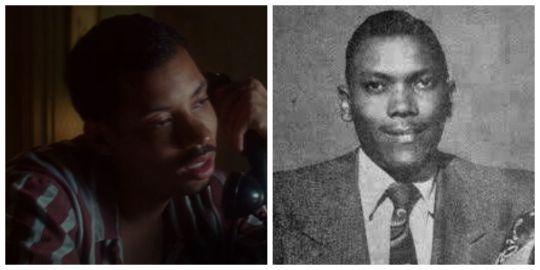
Melvin Gregg portrays Joe Guy, a trumpet player who struggles with a drug addiction. He's also romantically involved with Holiday. Gregg appeared as Erick Scott in High Flying Bird and Marcus Parrish in The Way Back. He currently portrays Drew "Manboy" Miller in Snowfall.

Tyler James Williams portrays Lester Young, a saxophonist in Holiday's band who is known as "Prez." William starred as Chris in Everybody Hates Chris and portrayed Lionel Higgins in Dear White People. He also appeared as Noah in The Walking Dead.
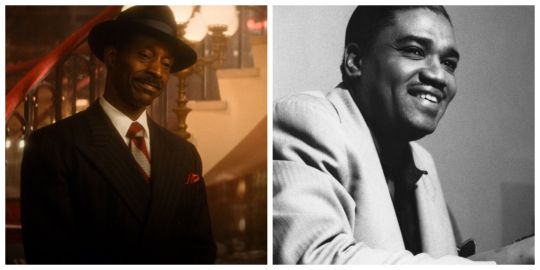
Rob Morgan appears as Louis McKay, a businessman whose is initially described as "a boxer and a pimp." He eventually marries Holiday, abuses her, and then disappears. Morgan portrayed Turk Barrett in Daredevil, Hap Jackson in Mudbound, and Officer Powell in Stranger Things.
Related: Trevante Rhodes & Tyler James Williams Interview: United States vs. Billie Holiday

Erik LaRay Harvey portrays James Monroe, Holiday's first husband who verbally abuses her while trying to please promoters. Erik LaRay Harvey appeared as Willis "Diamondback" Stryker in Luke Cage on Netflix and Del Chance in Godfather of Harlem.

Tone Bell portrays John Levy, the owner of the Ebony Club who has a sexual fling with Holiday. Like many males in the film, he puts on a confident facade but displays poor judgment behind closed doors. Tone Bell portrayed Carter in Disjointed and Scott Evans in The Flash. He recently appeared as Nick in Fam.
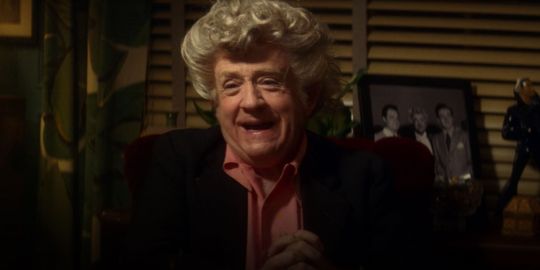
Leslie Jordan (Above) as Reginald Lord Devine: A radio show host who interviews Holiday throughout the film. He's a fictional character who asks inappropriate questions about the singer's persona life. Leslie Jordan portrayed Mr. Blackly in The Help and Beverley Leslie in Will & Grace. He currently appears as Phil in Call Me Kat.
Miss Lawrence As Miss Freddy: Holiday's stylist and a member of her inner circle. She is with the singer during the interview with Reginald Lord Devine. Miss Lawrence portrayed Miss Bruce in Star and also appeared in Empire season 2.
Related: Da'Vine Joy Randolph & Miss Lawrence Interview: United States vs. Billie Holiday
Dusan Dukic as Joe Glaser: Billie's manager at the beginning of the film. He seems to be doing his job; however, his client describes him as "crooked." Dusan Dukic portrayed a drug trafficker in The Terminal and a newscaster in Birdman.
Da'Vine Joy Randolph as Roslyn: Billie's good friend who wears an eye patch and provides emotional/career support. Da'Vine Joy Randolph portrayed Carla in Office Christmas Party, Cherise in High Fidelity, and Lady Reed in Dolemite Is My Name on Netflix.
Adriane Lenox as Mrs. Fletcher: Jimmy's mother who wants him to carry on his father's mortuary business. Her demeanor changes when she discovers that her son met Holiday. Adriane Lenox portrayed Rose Woods in Black Snake Moan and Denise Oher in The Blind Side.
Evan Ross as Sam Williams: Jimmy's FBI colleague who is curious about his success. Evan Ross portrayed Jeff in Kevin, Who Lives at Home and Messalla in The Hunger Games movie franchise. He recently appeared as Angel Rivera in Star.
The United States vs. Billie Holiday released in February 2021 on Hulu.
Next: Andra Day & Lee Daniels Interview: United States vs. Billie Holiday
The United States vs. Billie Holiday Cast & Real-Life Character Guide from https://ift.tt/3sC7OtC
1 note
·
View note

